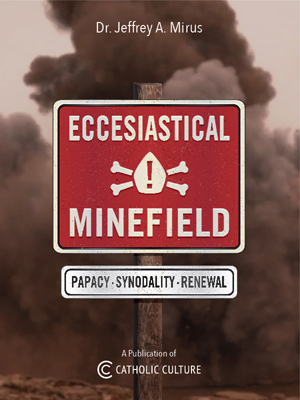Catholic Activity: Oplatek, Old Polish Custom
This Polish custom of the breaking and passing of the thin wafery Oplatek bread at the Christmas Eve meal reminds us of our daily bread and the Bread of Life who came into the world.
DIRECTIONS
We have adopted a custom from the Polish for Christmas Eve. At their Christmas Eve meal, after spreading hay under the cloth and (in times past) on the floor of the room, the Polish family stands together and the father breaks off a piece of the Oplatek (pronounced opwatek), the blessed Christmas wafer, and passes it on. This is a thin bread pressed in oblong irons in the convents, and on it in relief is the Nativity scene. Made like the host, it is a reminder of our daily bread and the Bread of Life who was born a man tonight. The father passes it to the next member of the family, who breaks a piece and passes it, until all the family has shared it. It is to remind them what this night is, who comes to us, why, and what it makes us, one to another. An extra place at table tells the little Christ and His Mother that they would be welcome in this "inn" should they knock at our door.
In the past the Oplatek was given us by our Polish friends. Now we use this holy symbolism with bread we bake ourselves — and mixing it is a beautiful meditation for a mother. It is baked as rolls in a round tin, round like the circle of eternity and like the everlastingness of God. After the Blessing of Bread, the father or an older member of the family sprinkles the bread with holy water, breaks off a roll and passes it to the person on his right, who breaks a roll from it for himself and passes it. It is our own custom, in terms significant to us. The father or ranking member of the family reads the Blessing of Bread.
A story was told us by a woman whose family is still in Poland. Every Christmas their family had Oplatek. When some migrated to America, those in Poland sent Oplatek to America and those in America sent Oplatek to Poland. Came the Russians with their persecution and espionage, and the family in Poland learned to conform, withdraw, carry their religion in their hearts and write between the lines of their letters.
When it was time to send the Oplatek, they determined to find a way. That year the family in America received a conventional card on which was pasted a red paper-like disk with a conventional greeting. The censor never suspected it was Oplatek, properly blessed, cut in a circle like a host, painted red for Divine Love not for Communism, and sent as a salute from one part of the Mystical Body to another half a world away. They were reminding each other that they share the same Body, eat the same Flesh.
Activity Source: Year and Our Children, The by Mary Reed Newland, P.J. Kenedy & Sons, New York, 1956






